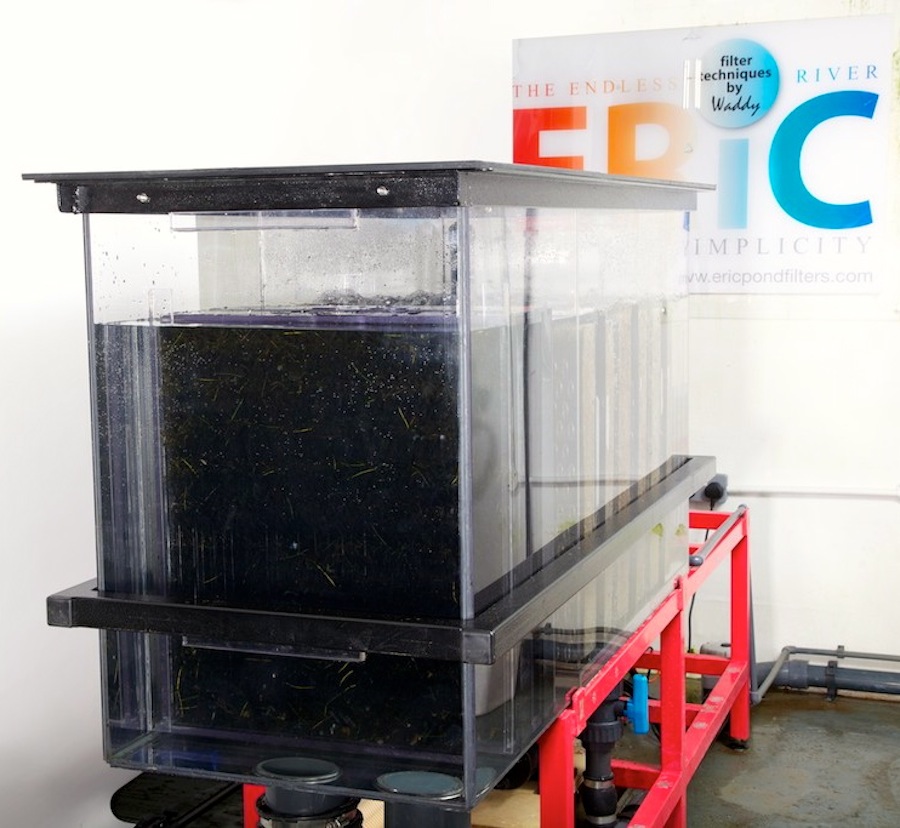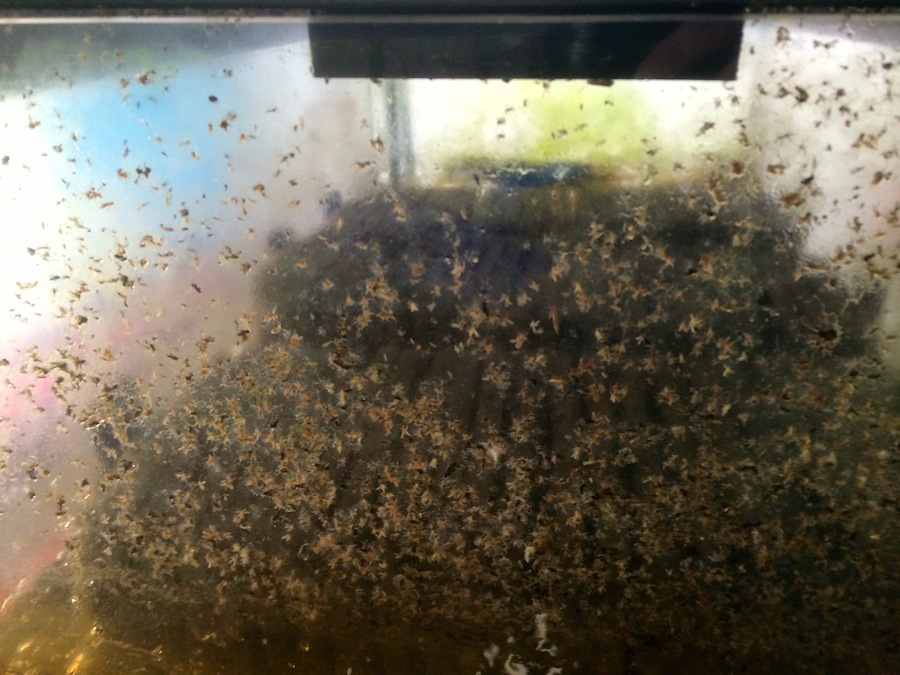I feel now, that after five years of my Eric Filters have been installed on Koi ponds – practically all around the globe, the fact I’ve had NO complaints from any owners that their Koi have had no ‘new’ occurrences of these problems although many did have these problems before.
Now I’d be perfectly stupid to put this down to the fact that this is all due to my filter systems – for once and for all – it is not!
Both these serious problems can be prevented from any new cases arising with EVERY filter system you care to name.
Providing all these filters (both mechanical and biological stages) are kept to be squeaky clean – at least twice a year.
(When I say ‘squeaky clean’ I mean exactly as they were when they were brand new!)
Forget all the nonsense and excuses spouted about it is ‘genetics’ that are to blame for these problems.
The Japanese Koi breeders have no problems with ‘genetics’ simply because all their systems are cleaned and disinfected thoroughly every nine months and then left to dry for three more months whilst their Koi stocks are kept outdoors in the mud ponds.
Also please don’t be under the belief that the filter boxes and their contents become more ‘mature’ as time passes – they don’t, they simply become ‘dirtier’ and if nothing is done to rectify this, the dirt continues to build up.
Unfortunately with many filter systems on the market today, a total clean out is both highly labour-intensive and very time consuming – especially when the media used is loose inside the outer boxes or trapped inside in heavy sacks.
Another problem here is that many filter boxes are deep and to clean them thoroughly means having to drop the pond water level to be able to do this.
This results here in having to wait until the new mains water top-up gets to a level when the filter pump/s can be re-started.
All these problems combined become ‘a bind’ for the owner and, as a result, many filters are left unattended for far too long.
With my (Eric) filters, maintain correctly, these problems can never arise for many reasons –
The outer boxes are narrow and shallow.
In terms of the pond volume to be filtered, the outer boxes hold very little water.
When a filter is completely discharged to waste, very little pond water level is lost, so the pump can be re-started immediately.
There is only one brush box (mechanical stage) in all my filters and this can be removed easily if ever required.
There are eMat cartridge blocks (biological stages) in all my filters and these can be removed easily when required.
As an example, this is my own E2.5 (clear) filter that I’m using for demonstration purposes; this holds one brush box, three eMat cartridge blocks and only 85-gallons of water.

Once the brush box and three cartridge blocks have been removed, all that’s left is the empty box and a quick spray from a garden hose is all it takes to be sure it is perfectly clean.
All pond systems and all maintenance regimes vary but in my case and at this time of the year, I discharge my 85-gallon filter to waste every three days and that’s all that’s required.
There is little labour involved at all – aside from turning valve handles. This can be completed in less than three minutes and the filter can be re-started immediately.
(I also use a constant trickle of tap water to slowly replace the water discharged.)
My own Eric filters have been assembled in clear PVC for demonstration purposes and quickly the insides become coated with black gnat larvae that make demonstration difficult.

It does not affect the workings of the filter at all, but it is difficult to see what’s happening inside the filter.
As a result I do a complete clean out every six weeks and I’d urge all owners of pond filters to do exactly the same if possible.
Remove brush box and cartridge blocks –

Air pump kept running to ensure any debris is removed from the inside of the box –

Mains water from a hose, a damp cloth and a quick wipe brings it all back to new

Replace brush box and cartridge blocks and start-up the squeaky-clean filter.

This entire operation can be carried out (with an Eric filter) in less than 15 minutes.
15 minutes of time spent every two months to carry out this major service is not exactly time-consuming and believe me, your Koi will thank you for it.
Finally, preventing Hikui and Shimi from ever occurring again is a direct result of much-improved pond water conditions and this will benefit ALL Koi!
Waddy.
Waddy’s blog 12/11/14
